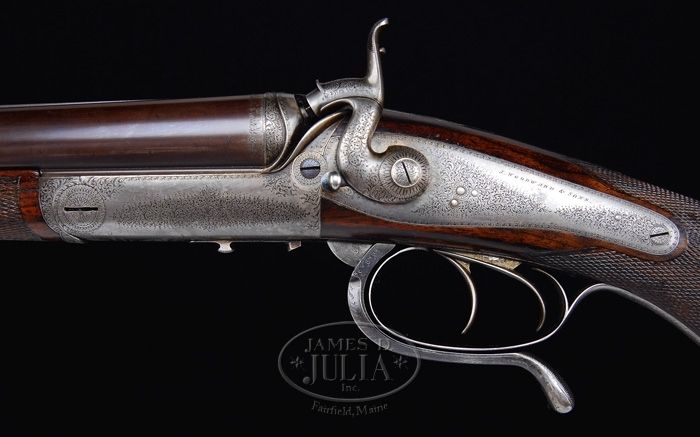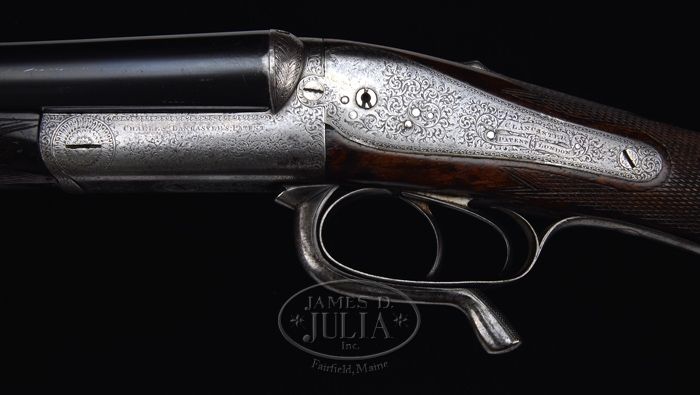"James-I," your newly purchased
Charles Lancaster gun is a great find, so I extend my heartiest congratulations to you, as well as to the
Lancaster itself for attracting a sympathetic and sensible buyer, who is willing to restore it to former glory and usefulness. The extensive, well-cut engraving and original wood quality are marvelous bonuses.
This
Lancaster is clearly a first-quality gun, and was made by a gunmaker renowned for the workmanship and quality of its productions, which attributes are displayed in your photographs. I believe that
Charles Lancaster was particularly famous for its barrel quality and many innovative inventions (
Lancaster oval bore rifling, four-barrel guns, etc.).
A discerning eye is needed to look beyond and see under the dirt, grime and minor repairs necessary (replacing and re-engraving screws or pins, etc.) to the quality and hidden beauty languishing beneath, which is an ability to be admired. It is doubly admirable that you have rescued and also intend to restore a sterling example of nineteenth century craftsmanship and the gunmaker's art, all things that need to be preserved, conserved, even example by example, in my opinion, and eventually passed on to future generations to equally appreciate.
Once the gun's restoration is completed, it will be returned to its earlier magnificence and functionality. I then hope that you will have the opportunity and inclination to use the gun afield and / or at the range. I take all of my antique guns afield and to the gun club, just as the original owners enjoyed using them, while exhibiting their discriminating taste for and enviable choices of very fine guns.
The shape of the gun's underlever, as you have said, has been damaged by egregious amateur assault, yet can be fully restored. Your question is how was it shaped originally. Below are two photographs, the first of a
Woodward hammer-gun (Actually, the hammerless under-lever guns by this maker look more similar to yours, and perhaps would be the better paradigm; but I could not locate one for use here.), which is closer to the underlever shown for your gun than is the succeeding
Lancaster gun shown with its thicker push-forward underlever. The contouring around the respective trigger-guards is basically the same, however. Both should provide a close approximation of originality to enable yours to be reformed or for the damaged portion to be replaced altogether.
Woodward, serial number 3519:
 Lancaster
Lancaster, serial number 4923:

I have found a slightly different completion date for your
Charles Lancaster gun, bearing serial number 5789. The end-of-year serial number for 1888 and those for the two preceding years are shown immediately below. Accordingly, the subject gun was completed in early 1888.
1886 - last serial number for the year: 5627
1887 - last serial number for the year: 5764
1888 - last serial number for the year: 5926
Again, congratulations, and I wish you every success in restoring this gun and in future when afield or before the traps with your beautiful
Charles Lancaster gun.
Regards,
Edwardian